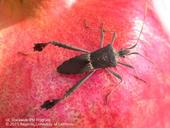
An army of leaffooted bugs attacking pomegranates, tomatoes or other plants in your garden can be quite disconcerting. They are large, long-legged bugs with a big appetite for fruits and seeds. After overwintering as adults in protected areas such as wood piles or outbuildings, they emerge to feed on seeds of winter weeds and then head out to farms and gardens in search of early season fruit and a place to lay eggs.
To learn more about identification, biology and management of these bugs, read the newly published Pest Note: Leaffooted Bugs authored by Chuck Ingels, UCCE Sacramento County and David Haviland, UCCE Kern County.
- Author: Joseph DiTomaso
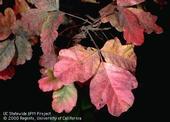
[From the August 2013 issue of the UC IPM Green Bulletin newsletter]
Removal of poison-oak requires special care. Most people are allergic to it, exhibiting skin rashes when they come in contact with it. Good control may require a combination of techniques and repeat herbicide applications in subsequent years.
Poison-oak can be removed through mechanical methods, but most managers...
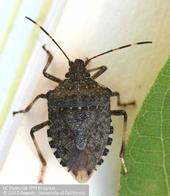
The brown marmorated stink bug (BMSB), a new invasive pest that originated in Asia, is moving into California gardens and landscapes. This stink bug has devastated fruit and vegetable crops in the eastern U.S. and is beginning to establish itself on the West Coast. BMSB built up significant overwintering populations in landscapes in the City of Sacramento last fall and has been found sporadically in many other areas of the state from San Diego northward. It could become a pest in gardens in some parts of the state as soon as this year. A new UC IPM Pest Note: Brown Marmorated Stink Bug written by Chuck Ingels, UCCE Sacramento, and Lucia Varela, UC Statewide IPM...
- Author: Cheryl A. Wilen
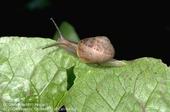
[From the May 2013 issue of the UC IPM Green Bulletin newsletter]
For the last 30 years, the primary mollusk (snail and slug) baits used in the landscaping industry have been those containing metaldehyde as the active ingredient. About 10 years ago, iron phosphate came on the market and is now also widely used, particularly in areas where people and pets may encounter the molluscicide. Recently a new active ingredient, ferric sodium EDTA, has become available for both home use and professional pest management.
You can find this active ingredient in new formulations...
- Author: Mary Louise Flint
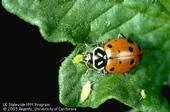
Many retail nurseries and garden centers sell lady beetles for controlling aphids in gardens and landscapes. Gardeners often ask, “Does releasing lady beetles really work?”
University of California research has demonstrated that lady beetle releases can effectively control aphids in a limited landscape or garden area if properly handled and applied in sufficient numbers. However, because of inadequate release rates or poor quality, lady beetles often fail to provide satisfactory control; other low toxicity aphid management practices such as hosing off or insecticidal soap or oil sprays may be more effective. Here are some things to consider if you decide to try lady beetle releases:
Lady beetles...


